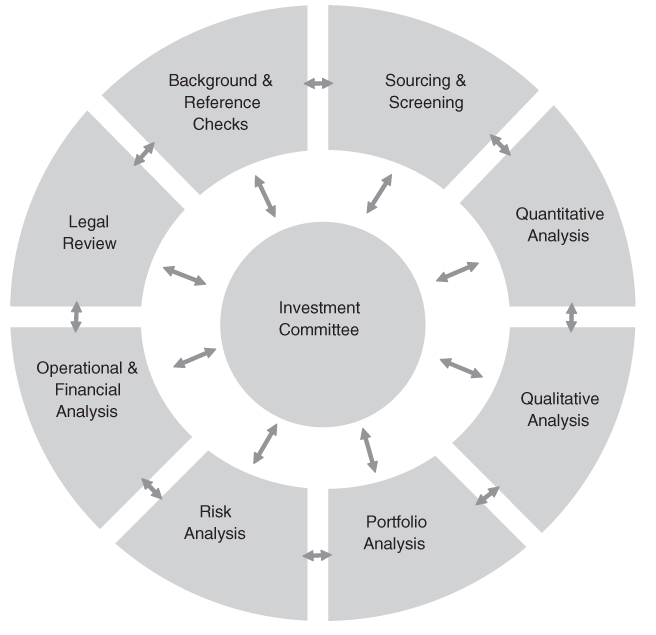Chapter 3
Due Diligence Process
“Not everything that counts can be counted, and not everything that can be counted counts.”
Albert Einstein
The process of evaluating and assessing hedge funds combines elements of both art and science. The successful due diligence analyst will determine how to straddle this fence to make an informed and intelligent investment decision.
The illustration in Figure 3.1 highlights the various components that feed into the decision to hire or fire a hedge fund manager. The circular design of the illustration can be misleading, though, as the due diligence process tends to be dynamic. There are number of things that must be completed before an investment decision can be made, but there is no set formal procedure that begins with step one and finishes with step 10. I have found that one of the biggest mistakes that one can make when analyzing a hedge fund is to apply a “check the box” mentality, which often leads the analyst to not see the forest for the trees.
Figure 3.1 Elements of the Hedge Fund Due Diligence Process

Key Areas of Focus within Each Component of Due Diligence
There are literally hundreds of areas of discussion when it comes to hedge fund manager analysis. The bullet points that follow represent some of the most critical points.
Sourcing and Screening
- Hedge funds can be sourced from a variety of places, including databases, service providers, ...
Get Hedge Fund Analysis: An In-Depth Guide to Evaluating Return Potential and Assessing Risks now with the O’Reilly learning platform.
O’Reilly members experience books, live events, courses curated by job role, and more from O’Reilly and nearly 200 top publishers.

